Your browser is out-of-date!
Update your browser to view this website correctly. Update my browser now
History

Robert Motherwell creates the Motherwell Foundation to ensure that the values he held dear—such as modernism, arts education, visual literacy, and scholarship—would continue beyond his lifetime.
1981
Robert Motherwell creates the Motherwell Foundation to ensure that the values he held dear—such as modernism, arts education, visual literacy, and scholarship—would continue beyond his lifetime.
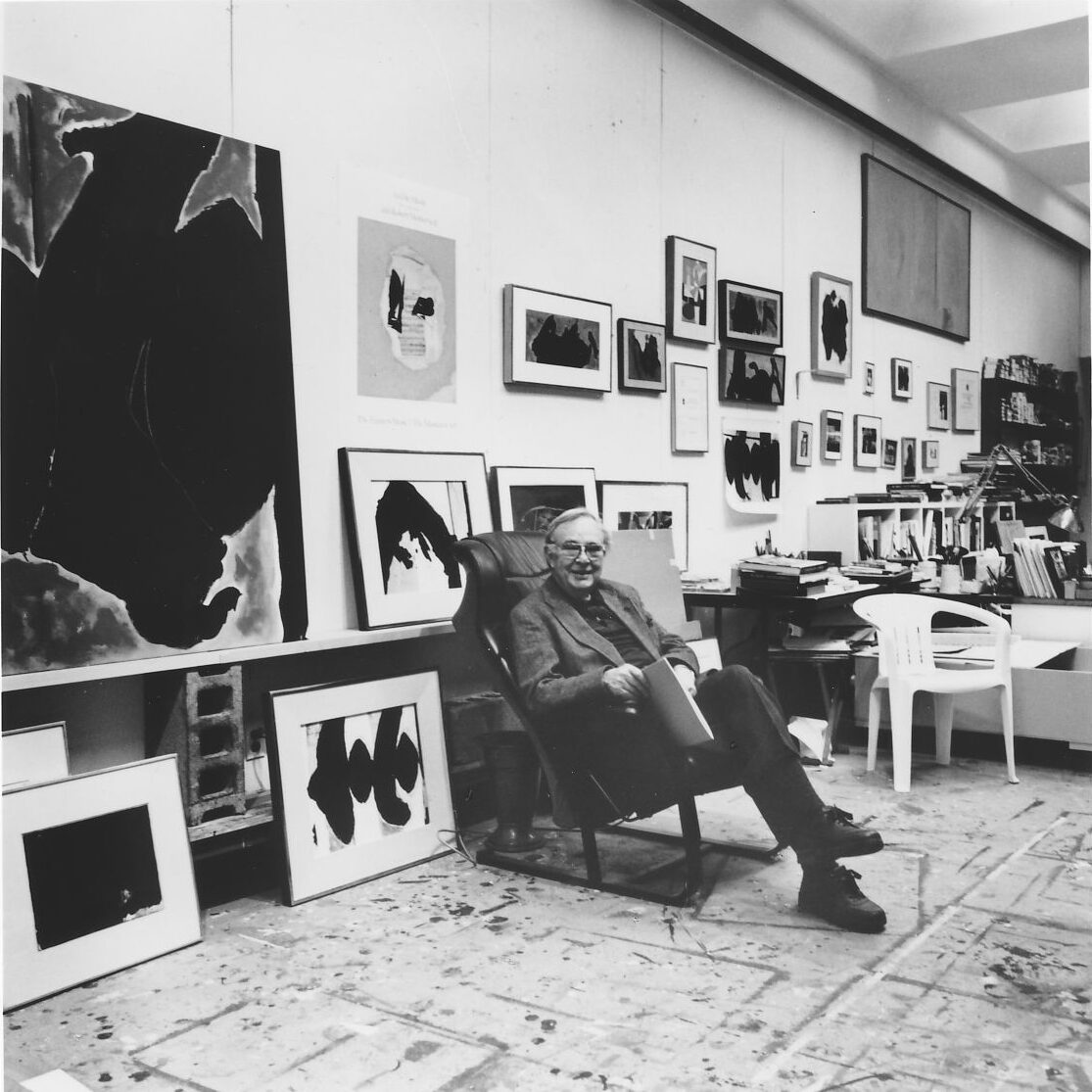
Motherwell changes the name to the Dedalus Foundation just a month before his death in July. This change emphasizes his wish that the Foundation would engage in a broad range of activities that go beyond his own artistic legacy. Motherwell was a great admirer of James Joyce, and the new name refers to Joyce’s alter-ego, Stephen Dedalus, who himself recalled the great fabricator Daedalus of Greek mythology.
1991
Motherwell changes the name to the Dedalus Foundation just a month before his death in July. This change emphasizes his wish that the Foundation would engage in a broad range of activities that go beyond his own artistic legacy. Motherwell was a great admirer of James Joyce, and the new name refers to Joyce’s alter-ego, Stephen Dedalus, who himself recalled the great fabricator Daedalus of Greek mythology.
In Motherwell’s will, the Foundation is named the residual legatee of his estate and inherits virtually all of the works of art in his possession at the time of his death, as well as the copyrights to all of his works in all mediums. In addition, the Foundation inherits all of Motherwell’s papers, notebooks, and correspondence, as well as the extensive art library he kept in his studio. Richard Rubin, Motherwell’s financial advisor, is named the first President of the Foundation.
Early Years
In Motherwell’s will, the Foundation is named the residual legatee of his estate and inherits virtually all of the works of art in his possession at the time of his death, as well as the copyrights to all of his works in all mediums. In addition, the Foundation inherits all of Motherwell’s papers, notebooks, and correspondence, as well as the extensive art library he kept in his studio. Richard Rubin, Motherwell’s financial advisor, is named the first President of the Foundation.
The Foundation becomes a private operating foundation and makes its first institutional grants in support of projects ranging from exhibitions to symposia and publications. The Foundation initiates a gift-purchase program, in which designated museums are able to acquire works by a combination of purchase and gift from the Foundation. By the end of the decade, over fifty museums will take advantage of this offer, including major acquisitions made by the Art Gallery of Ontario, the Denver Art Museum, and the Fort Worth Museum of Modern Art.
1993
The Foundation becomes a private operating foundation and makes its first institutional grants in support of projects ranging from exhibitions to symposia and publications. The Foundation initiates a gift-purchase program, in which designated museums are able to acquire works by a combination of purchase and gift from the Foundation. By the end of the decade, over fifty museums will take advantage of this offer, including major acquisitions made by the Art Gallery of Ontario, the Denver Art Museum, and the Fort Worth Museum of Modern Art.
The Foundation becomes actively involved in supporting educational programs, exhibitions, and publication programs at museums, colleges and universities, and art schools. Some of these are directly related to the work of Robert Motherwell but most are more general. In addition to providing funds for short term projects, the Foundation provides seed money to facilitate long term projects that are in their initial or planning stages.
1994
The Foundation becomes actively involved in supporting educational programs, exhibitions, and publication programs at museums, colleges and universities, and art schools. Some of these are directly related to the work of Robert Motherwell but most are more general. In addition to providing funds for short term projects, the Foundation provides seed money to facilitate long term projects that are in their initial or planning stages.
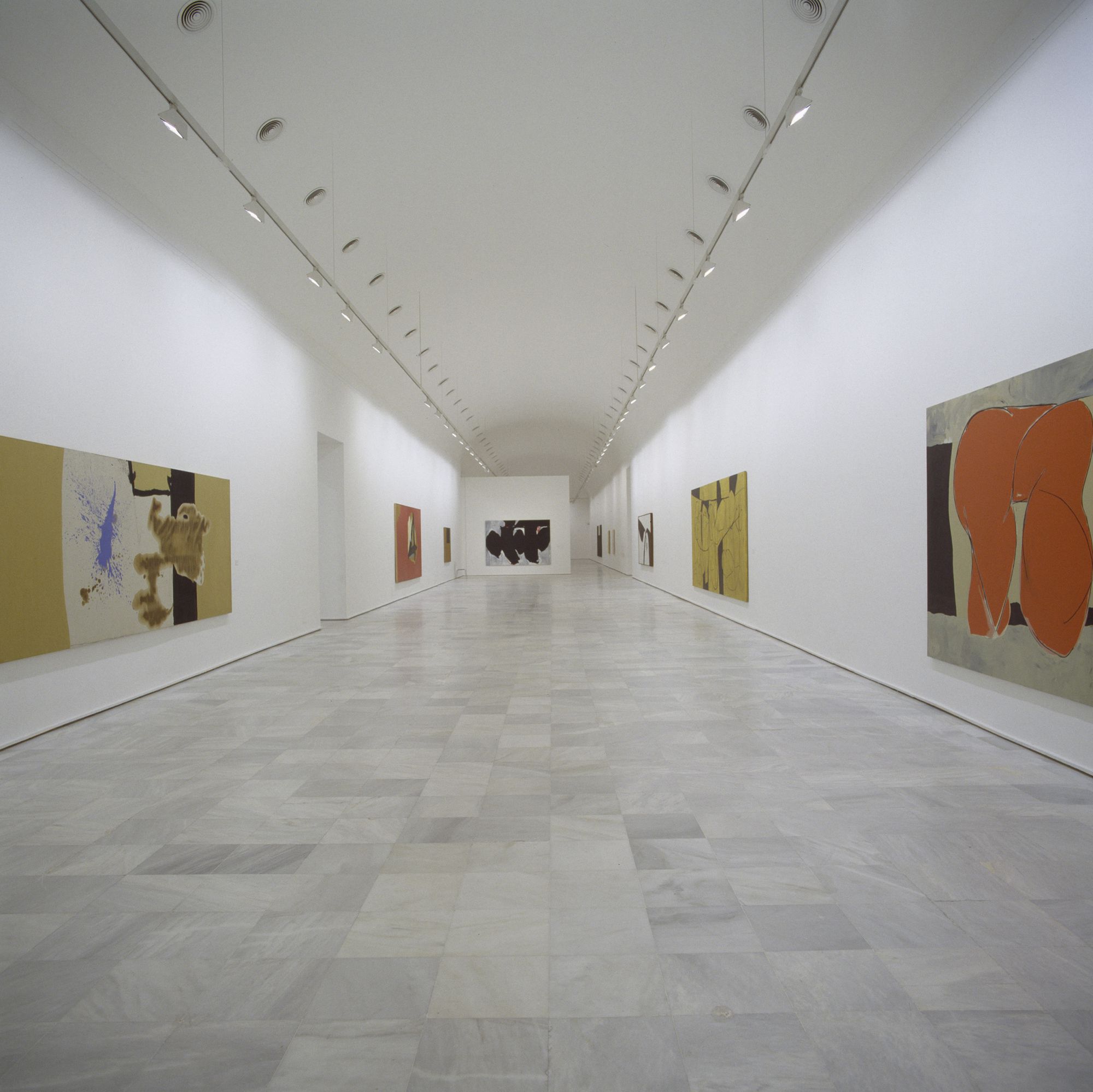
The Foundation supports the retrospective exhibition Motherwell, which opens at the Fundació Antoni Tàpies in Barcelona and travels to the Museo Nacional Centro de Arte Reina Sofía the following year. Supporting exhibitions and publications that engage with Motherwell’s work and thinking are core components of the Foundation’s continued mission.
1996
The Foundation supports the retrospective exhibition Motherwell, which opens at the Fundació Antoni Tàpies in Barcelona and travels to the Museo Nacional Centro de Arte Reina Sofía the following year. Supporting exhibitions and publications that engage with Motherwell’s work and thinking are core components of the Foundation’s continued mission.

The Dedalus Foundation Dissertation Fellowship is initiated, as is the Dedalus Foundation Senior Fellowship. The Foundation supports the exhibition Robert Motherwell on Paper: Gesture, Variation, Continuity which travels to university art galleries throughout America.
1997
The Dedalus Foundation Dissertation Fellowship is initiated, as is the Dedalus Foundation Senior Fellowship. The Foundation supports the exhibition Robert Motherwell on Paper: Gesture, Variation, Continuity which travels to university art galleries throughout America.
The Foundation continues to expand its programs, which now include the Dedalus Foundation Master of Fine Art Fellowships in Painting and Sculpture, the Dedalus Foundation Fellow in the Conservation of Modern and Contemporary Art at the Conservation Center of the Institute of Fine Arts, New York University, and the Dedalus Foundation High School Scholarships for graduating New York City high school students.
1999
The Foundation continues to expand its programs, which now include the Dedalus Foundation Master of Fine Art Fellowships in Painting and Sculpture, the Dedalus Foundation Fellow in the Conservation of Modern and Contemporary Art at the Conservation Center of the Institute of Fine Arts, New York University, and the Dedalus Foundation High School Scholarships for graduating New York City high school students.
The first Dedalus Foundation Fellow in the Archives of the Museum of Modern Art, New York, is appointed. This program is meant to encourage careers as museum archivists and continues until 2019.
2000
The first Dedalus Foundation Fellow in the Archives of the Museum of Modern Art, New York, is appointed. This program is meant to encourage careers as museum archivists and continues until 2019.
The Robert Motherwell Catalogue Raisonné Project is initiated, and intensely focused research begins on the catalogue raisonné of Motherwell’s paintings and collages. The Foundation continues to expand its programs and the first Robert Motherwell Book Award is given. Jack Flam is named President, and Morgan Spangle is engaged as Executive Director.
2002
The Robert Motherwell Catalogue Raisonné Project is initiated, and intensely focused research begins on the catalogue raisonné of Motherwell’s paintings and collages. The Foundation continues to expand its programs and the first Robert Motherwell Book Award is given. Jack Flam is named President, and Morgan Spangle is engaged as Executive Director.
Robert Motherwell: The complete prints 1940-1991: A catalogue raisonné, edited by Siri Engberg and Joan Banach, is published with the support of the Foundation by the Walker Art Center and Hudson Hills Press. A Motherwell retrospective at the Museum Morsbroich, Leverkusen, Germany, is supported by the Foundation.
2003-2004
Robert Motherwell: The complete prints 1940-1991: A catalogue raisonné, edited by Siri Engberg and Joan Banach, is published with the support of the Foundation by the Walker Art Center and Hudson Hills Press. A Motherwell retrospective at the Museum Morsbroich, Leverkusen, Germany, is supported by the Foundation.
A new edition of Motherwell’s writings, edited by Dore Ashton with Joan Banach, is published as part of the Documents of Twentieth Century Art series.
2007
A new edition of Motherwell’s writings, edited by Dore Ashton with Joan Banach, is published as part of the Documents of Twentieth Century Art series.
The Foundation plays a major role in exposing forgeries of works by Abstract Expressionist painters, including Motherwell, de Kooning, Pollock, Rothko, and Still, that were being sold by the Knoedler Gallery.
2008-2012
The Foundation plays a major role in exposing forgeries of works by Abstract Expressionist painters, including Motherwell, de Kooning, Pollock, Rothko, and Still, that were being sold by the Knoedler Gallery.
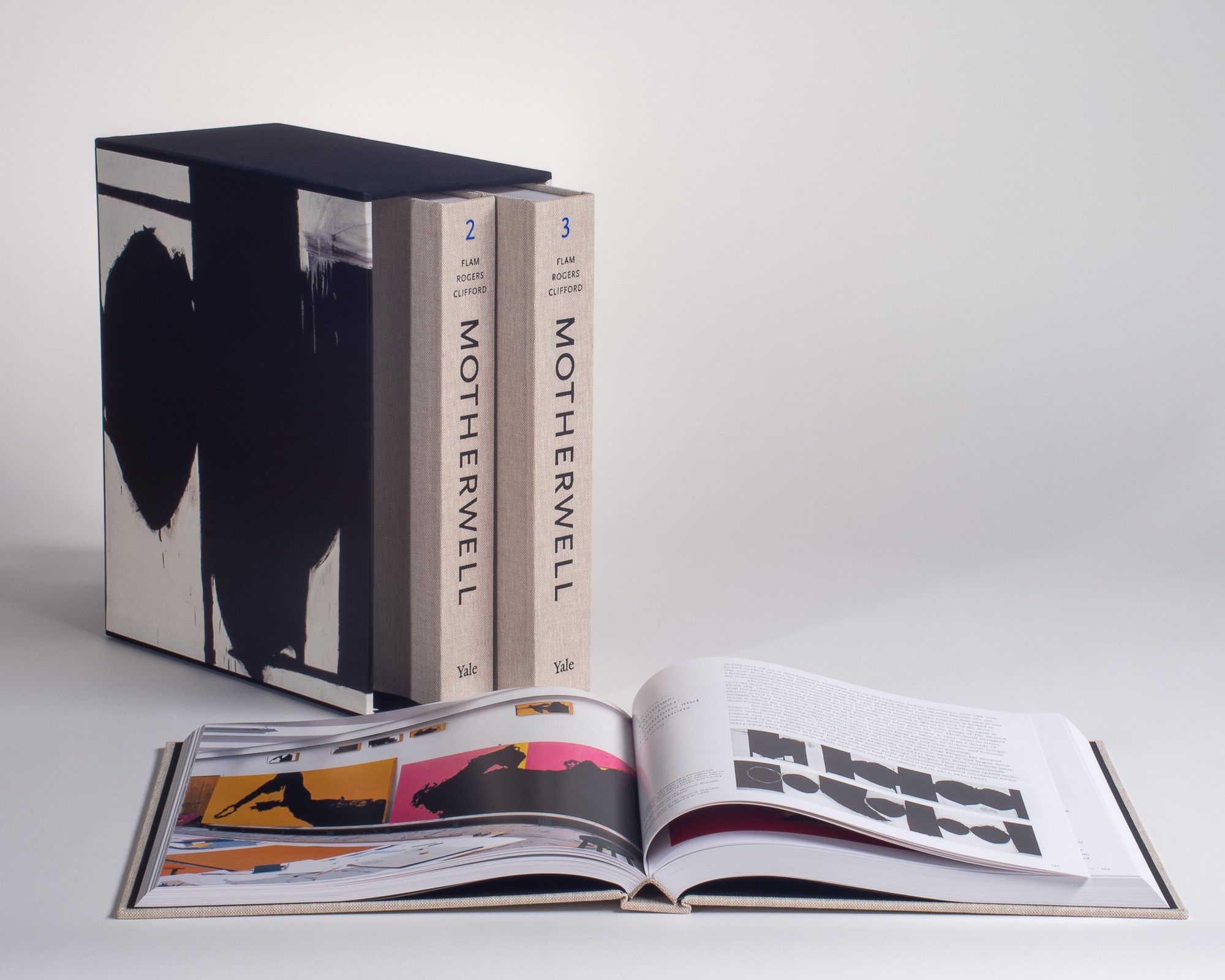
Robert Motherwell Paintings and Collages: A Catalogue Raisonné, 1941–1991, edited by Jack Flam, Katy Rogers, and Tim Clifford, and supported by the Foundation, is published by Yale University Press. The Dedalus Foundation Exhibition Catalogue Award is initiated. The Foundation continues to support exhibitions, including Robert Motherwell: Beside the Sea, at the Provincetown Art Association and Museum, and begins to expand partnership programs with other institutions.
2012
Robert Motherwell Paintings and Collages: A Catalogue Raisonné, 1941–1991, edited by Jack Flam, Katy Rogers, and Tim Clifford, and supported by the Foundation, is published by Yale University Press. The Dedalus Foundation Exhibition Catalogue Award is initiated. The Foundation continues to support exhibitions, including Robert Motherwell: Beside the Sea, at the Provincetown Art Association and Museum, and begins to expand partnership programs with other institutions.

The Foundation refocuses and refines its various programmatic emphases, designating five principle program areas: Archives and Conservation; Arts Education; Curatorial; Research and Publication; and Motherwell Legacy. In an effort to better leverage its resources in the support of arts non-profits, the Foundation’s institutional grantmaking begins to take a partnership model with the addition of in-kind support, including space and staff support, and direct educational programs such as art making classes, symposia, and panel discussions.
2013
The Foundation refocuses and refines its various programmatic emphases, designating five principle program areas: Archives and Conservation; Arts Education; Curatorial; Research and Publication; and Motherwell Legacy. In an effort to better leverage its resources in the support of arts non-profits, the Foundation’s institutional grantmaking begins to take a partnership model with the addition of in-kind support, including space and staff support, and direct educational programs such as art making classes, symposia, and panel discussions.
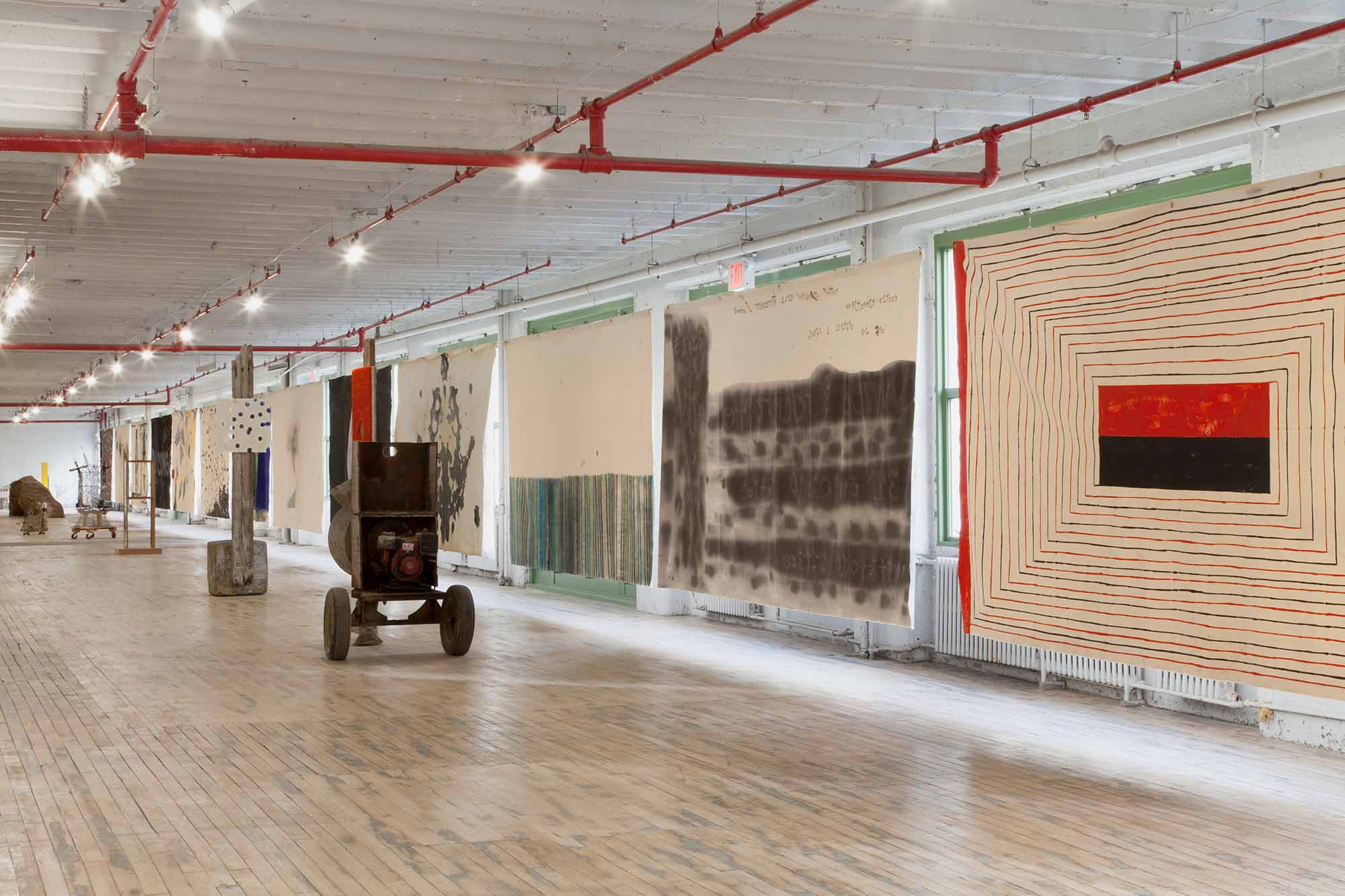
The Foundation expands its programs and Katy Rogers is appointed Programs Director. The Foundation moves its main offices to 25 East 21st Street in Manhattan and leases educational and gallery spaces in Sunset Park, Brooklyn, where it establishes classrooms for art instruction for both children and adults. Exhibitions continue to be supported, including Robert Motherwell: The Early Collages, shown at the Guggenheim museums in Venice and New York, and the sponsorship of a large exhibition done in collaboration with the Brooklyn Rail: Come Together: Surviving Sandy.
2013-2014
The Foundation expands its programs and Katy Rogers is appointed Programs Director. The Foundation moves its main offices to 25 East 21st Street in Manhattan and leases educational and gallery spaces in Sunset Park, Brooklyn, where it establishes classrooms for art instruction for both children and adults. Exhibitions continue to be supported, including Robert Motherwell: The Early Collages, shown at the Guggenheim museums in Venice and New York, and the sponsorship of a large exhibition done in collaboration with the Brooklyn Rail: Come Together: Surviving Sandy.
To celebrate the centenary of Motherwell’s birth, the Foundation supports research fellows and a symposium at the Archives of American Art, Washington, D.C., as well as a series of exhibitions: at Hunter College and the Metropolitan Museum of Art, New York; de Young Museum, San Francisco; Provincetown Art Association and Museum, and the Fine Arts Work Center, Provincetown. Robert Motherwell: 100 Years, by Jack Flam, Katy Rogers, and Tim Clifford, is published by Skira with the support of the Foundation. The Foundation begins an extended series of public programs, at both 25 East 21st Street and in Brooklyn, on a wide range of topics, including archives, catalogues raisonnés, conservation, and authenticity.
2015
To celebrate the centenary of Motherwell’s birth, the Foundation supports research fellows and a symposium at the Archives of American Art, Washington, D.C., as well as a series of exhibitions: at Hunter College and the Metropolitan Museum of Art, New York; de Young Museum, San Francisco; Provincetown Art Association and Museum, and the Fine Arts Work Center, Provincetown. Robert Motherwell: 100 Years, by Jack Flam, Katy Rogers, and Tim Clifford, is published by Skira with the support of the Foundation. The Foundation begins an extended series of public programs, at both 25 East 21st Street and in Brooklyn, on a wide range of topics, including archives, catalogues raisonnés, conservation, and authenticity.

The Foundation continues to build its public programs with panel discussions organized by past conservation and archives Fellows, exhibitions of Motherwell and other artists, and partnerships with a diverse group of organizations, including Art Beyond Sight, ArtsConnection, the Catalogue Raisonné Scholars Association, Denniston Hill, the Pollock-Krasner House and Study Center, and many others. An emphasis is placed on working with local community organizations in Sunset Park to support and amplify arts programming in underserved populations.
2016-2020
The Foundation continues to build its public programs with panel discussions organized by past conservation and archives Fellows, exhibitions of Motherwell and other artists, and partnerships with a diverse group of organizations, including Art Beyond Sight, ArtsConnection, the Catalogue Raisonné Scholars Association, Denniston Hill, the Pollock-Krasner House and Study Center, and many others. An emphasis is placed on working with local community organizations in Sunset Park to support and amplify arts programming in underserved populations.
Due to the Covid-19 pandemic, the Foundation suspends all classroom and in-person exhibition programs. The Foundation focuses on accessibility through online events and initiates new programs, especially in relation to issues of equity, diversity, and inclusion. The Foundation supports The Smithsonian American Art Museum’s establishment of a new professional development program to foster excellence and diversity in the field of American art scholarship, “Toward Equity in Publishing,” a two-year pilot program that will provide critical support to early-career art historians. Through editorial mentorship and workshops, the program will demystify scholarly publication processes and help scholars revise manuscripts for submission and publication.
2020-2021
Due to the Covid-19 pandemic, the Foundation suspends all classroom and in-person exhibition programs. The Foundation focuses on accessibility through online events and initiates new programs, especially in relation to issues of equity, diversity, and inclusion. The Foundation supports The Smithsonian American Art Museum’s establishment of a new professional development program to foster excellence and diversity in the field of American art scholarship, “Toward Equity in Publishing,” a two-year pilot program that will provide critical support to early-career art historians. Through editorial mentorship and workshops, the program will demystify scholarly publication processes and help scholars revise manuscripts for submission and publication.
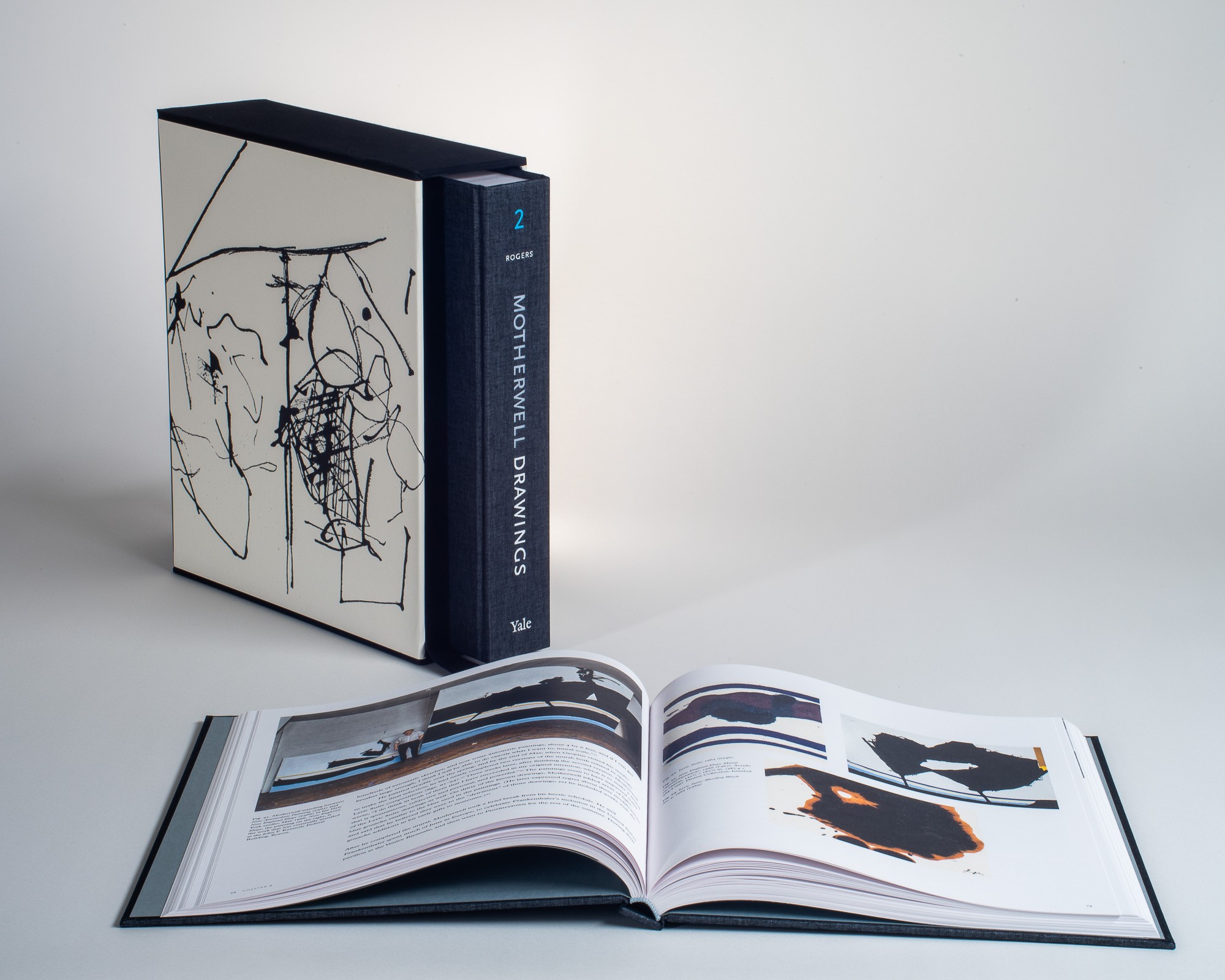
The Dedalus Foundation Fund for Past Fellows and Awardees is initiated. The program lends targeted financial support to past recipients of fellowships and awards and enhances the sense of community and opportunity within the overlapping circles of Dedalus awardees. It allows the Foundation to remain connected to and supportive of the exceptional scholars and artists who have won its various awards and fellowships. The Foundation supports Robert Motherwell Drawings: A Catalogue Raisonné, by Katy Rogers, published by Yale University Press. The exhibition Robert Motherwell Drawings: As Fast as the Mind Itself opens at the Menil Drawing Institute, Houston.
2022
The Dedalus Foundation Fund for Past Fellows and Awardees is initiated. The program lends targeted financial support to past recipients of fellowships and awards and enhances the sense of community and opportunity within the overlapping circles of Dedalus awardees. It allows the Foundation to remain connected to and supportive of the exceptional scholars and artists who have won its various awards and fellowships. The Foundation supports Robert Motherwell Drawings: A Catalogue Raisonné, by Katy Rogers, published by Yale University Press. The exhibition Robert Motherwell Drawings: As Fast as the Mind Itself opens at the Menil Drawing Institute, Houston.
